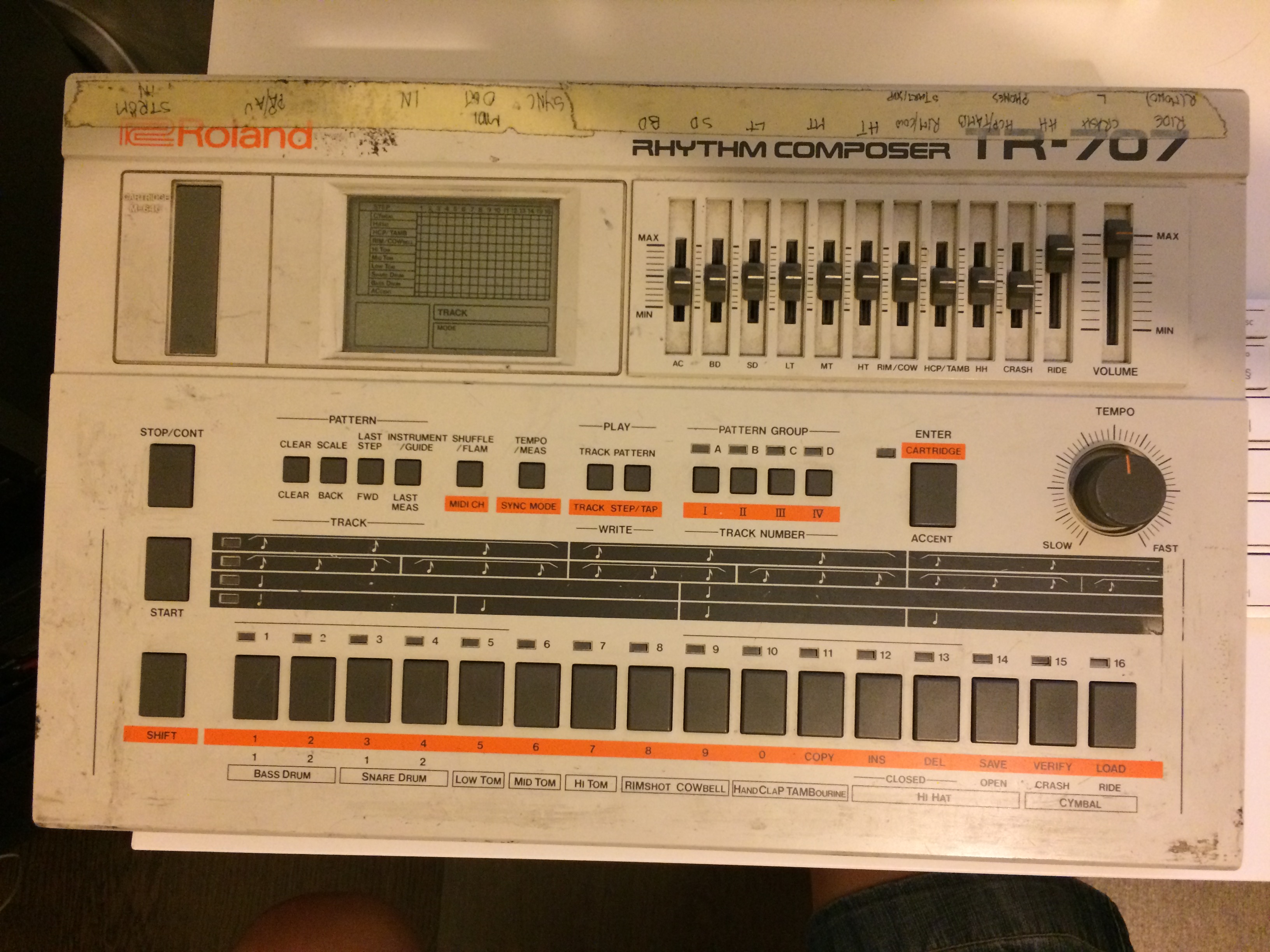Roland TR-707
Today I got a Roland TR-707 ”Rhytm Composer” from my dad. (In exchange, he got my SE Electronics Reflexion Filter. Each of us think we made the better part of the deal.)

A quick phone snap of the Roland TR-707
Unfortunately the first attempt at turning the device on failed. Dad did not have an external PSU for it, so I had to look through my own boxes of PSUs.
The 707 has a battery compartment that holds two AA batteries, but from what I’ve been able to gather from the user manual of the device as well as from the internet in general, these are only to power the machines memory when disconnected from a regular power source. It’s main power comes from the DC input that expects 12 V DC, center negative. I found an adapter among my spares that matched the specs but it didn’t connect properly. It seems like something i stuck inside the DC In jack.
When checking it out and while searching for information on the PSU (the center negative thing was not evident from the machine itself) I realized that my particular unit has an extra jack next to the power switch. The jack seems to be a 3.5 mm mono jack and from the labeling on a piece of tape on top of the machine, this is an alternative power jack.
To confirm this I decided to open up the 707. Doing so is very straight forward. Just turn it so the bottom faces up and unscrew seven philips screws. Once it poped open I could see wiring from the 3.5 mm jack to the circuit board connection of the regular power jack, so it seems like this indeed is an alternative power jack. Unfortunately, when I opened it I managed to sever the red wire that connects the battery pack to the circuit board, so I’ve busted the memory for now. I don’t have a soldering iron at home so I can’t fix it right now, but I don’t see how fixing it can be a problem.

(Left to right) 1. The regular DC in. 2. Power switch. 3. The tacked-on, alternate DC input.
I put the machine back together and started searching for a 12 V DC power supply with a 3.5 mm plug and realized that my guitar pedal PSU (the T-Rex Fuel Tank) actually have that feature. So I plugged it in and tried to power on the device, but sadly no luck.
At this time I’m not sure what the problem is and since I don’t have neither a soldering iron nor a multimeter available at home, I’ll have to put this off to another day. I’ll keep blogging about my way to make it functional again.
 Henrik Carlsson posted this
on
and tagged it with Audio gear Drum Machine Fixing things Restoring a Roland TR-707 Roland TR-707
Henrik Carlsson posted this
on
and tagged it with Audio gear Drum Machine Fixing things Restoring a Roland TR-707 Roland TR-707  ©
©